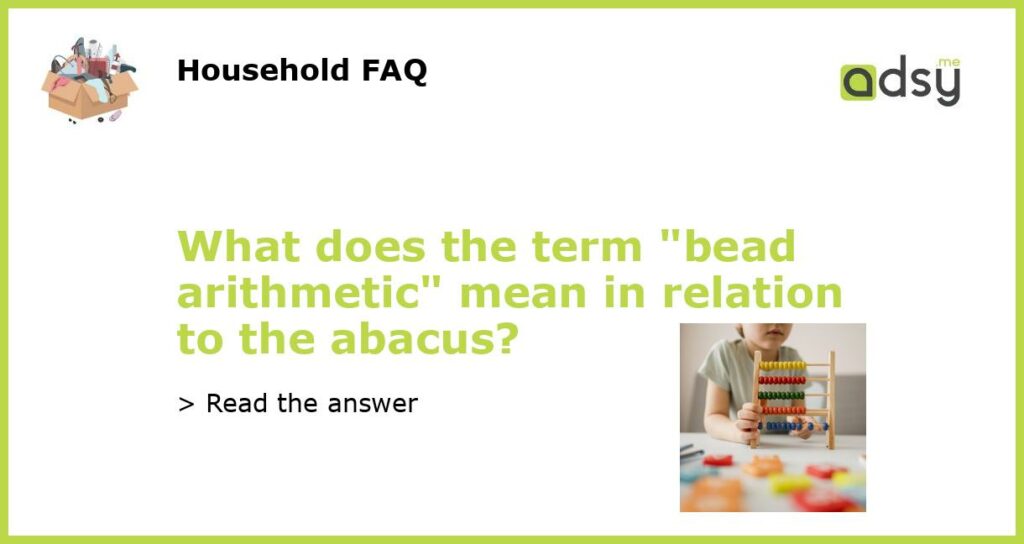Understanding Bead Arithmetic on an Abacus
If you’re not familiar with the abacus, it’s an ancient counting tool that has been used for centuries. It consists of a frame with rods and beads that can be moved up and down to perform arithmetic operations. One term you may come across when learning about the abacus is “bead arithmetic.” So, what exactly does this term mean?
Defining Bead Arithmetic
In simple terms, bead arithmetic refers to the process of performing addition and subtraction using an abacus. The beads on the abacus rods represent different values, and moving them up or down can help you add or subtract with ease. Bead arithmetic can be a valuable tool for learning math, as it provides a visual aid to help visualize the operation.
The Basics of Bead Arithmetic
Using bead arithmetic on an abacus is relatively simple. Each row of beads on the abacus represents a different place value, such as ones, tens, hundreds, etc. To perform addition, you start with the digits on the right side of the abacus and work your way left, using the beads to represent the numbers you are adding. For example, to add 3 + 4, you would count three beads, then four more beads, for a total of seven. To perform subtraction, you start at the left side and work your way right, again using the beads to represent the numbers you are subtracting.
The Advantages of Using an Abacus for Bead Arithmetic
While bead arithmetic can be performed on paper or a calculator, using an abacus provides some distinct advantages. For one, it helps students develop strong math skills and a deeper understanding of how numbers work. It also provides a tactile experience that can help students with learning differences or disabilities. Additionally, an abacus can be a helpful tool for mental math, as it can be used to visualize numbers in a different way than traditional methods.
The Future of Bead Arithmetic
While the abacus may seem like an outdated tool, it still has a place in modern education. Many schools around the world still teach students to use an abacus for bead arithmetic, and it continues to be a valuable learning tool. As technology continues to advance, there may be new ways to incorporate bead arithmetic into digital learning tools, providing even more students with access to this important skill.






